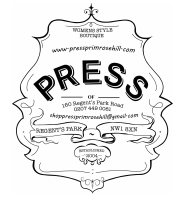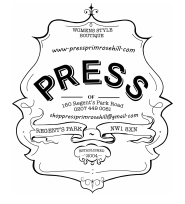Groupthink is what fashion is all about. You buy into a trend to signal that you belong to a group. It could be an amorphous tribe, like the 2020 tribe: “I am fully signed up to what it means to be modern.” It could be a more defined collective: “I am Dior woman.” “I have a thing about cowboy boots.” “I worship at the altar of Flight of the Conchords.”
Trends often originate out of a variety of groupthink too. It’s striking during the usual biannual month of catwalk shows how many mirror images — or more accurately mirror items — are created by different brands. Why? Because designers live in the same cities, hang out in the same places, watch the same films, read the same books. They reside in a kind of hall of mirrors, and their designs reflect that — literally.
What I am trying to say is that there was something in the air in London, Paris, Milan and New York long before Covid-19. Trends are infectious. Designers and their studio teams pick them up initially in the cutting-edge petri dishes of Shoreditch in London or Brera in Milan. But those trends go truly viral only if the consumer catches on; catches it. When the R rate is of an aesthetic nature, the key for the health of a brand is that it rises rather than falls.

At the autumn-winter shows earlier in the year it wasn’t so much about an R rate — not on the catwalks anyway — as a W rate. The waistcoat was everywhere. It was in sleek cream with black buttons at Dior, worn with matching trousers and layered over the latest iteration of Maria Grazia Chiuri’s cult feminist slogan tees (“I say I”). At Burberry the doublet du jour was delivered in the brand’s signature check, part of a three-piece suit, and was layered over — sigh — the preternaturally honed abdominals of that most super of supers, Joan Smalls.
What a natty idea it seemed at the time. A move on from the tailored jacket that has been ubiquitous for a couple of years, but with a greater facility for being redeployed in a casual context. Yet now that waistcoats are hitting the shops, and many of us are to all intents and purposes top halves only — professionally at least — for the foreseeable, it’s an idea that seems more than merely natty. It seems inspired. Possibly psychic.
Sometimes only tailoring can power you through a big work day. Yet a jacket can look de trop when you are on Zoom in your spare room. A waistcoat offers all the same semantics minus the sleeves, which means that those of us who have the tendency to feel constrained across the shoulders — me! — can shrug off any discomfort; can even, when not on Zoom duty, enjoy a good slouch. (I consider the occasional slouch to be medicinal.) In short, the weskit — as it was once called — is the perfect kit for work in the time of coronavirus.
But this isn’t only a Monday-to-Friday proposition. When the weekend comes round we can take a leaf out of the Dior book, following the all-new equation in which waistcoat plus slogan T-shirt equals the epitome of cool, as opposed to a fashion mortification only clocked on heavy metal fans. So confident is Dior of its formula that it has even factored a headscarf into the mix. The result? Not remotely Iron Maiden. Rather, modern maven. For evening, if you have the arms for it, you could button up over your bra, or perhaps a barely visible lacy cami.

The motherlode costs three figures. Heaven forfend what it would weigh in at with sleeves. Similarly up there are the iterations from the boutique British brand Press Primrose Hill, which are made by Lardini, a traditional family tailoring firm in Italy that works for numerous big luxury names. The quality is superlative. Choose from black wool or velvet (£475 and £425, pressprimrosehill.com) or pale pink needlecord or grey houndstooth wool (£325 and £475 respectively).
On the high street you can pick between waistcoats that think like blazers — longline, boxily cut — and others that think like Sally Bowles. My favourite is Arket’s low-scooped black style (£59, arket.com). So low is that decolletage, however, that even Bowles might think twice about wearing it without an underlayer, although you might always go the pasties route if you were headlining at the Kit Kat Klub. Massimo Dutti’s navy take would ensure your bosoms remain your business (£69.99, massimodutti.com).
If pale means interesting to you, then there’s Zara’s fitted cream iteration (£49.99, zara.com), and Topshop’s and Mango’s more jacket-like longline versions of similar, both of which are in the sale (£20, topshop.com; £19.99, mango.com). And if camel is your thing, try Mango’s takes, available fitted and cut to the hip, or longer, looser and belted (£49.99 and £59.99 respectively).
One of the peculiarities of the waistcoat is its double life as rocker attire. By all means embrace the dark side. All I would urge is that you steer clear of anything too This is Spinal Tap. Animal-print numbers are strictly for mockumentaries only. An acceptable approach, nay a fabulous one, would be Anna Sui’s embroidered chambray beauty (£398, freepeople.com).
If your brand of exhibitionism is more of the Bertie Wooster variety try Sandro’s navy on grey tweed (£175, sandro-paris-com) or, if you are lucky enough to share Bertie’s budgets as well as his tastes, Ralph Lauren’s gold-buttoned blue-and-white-striped satin iteration (£640, ralphlauren.co.uk). What ho, indeed.
Instagram: @timesfashiondesk






